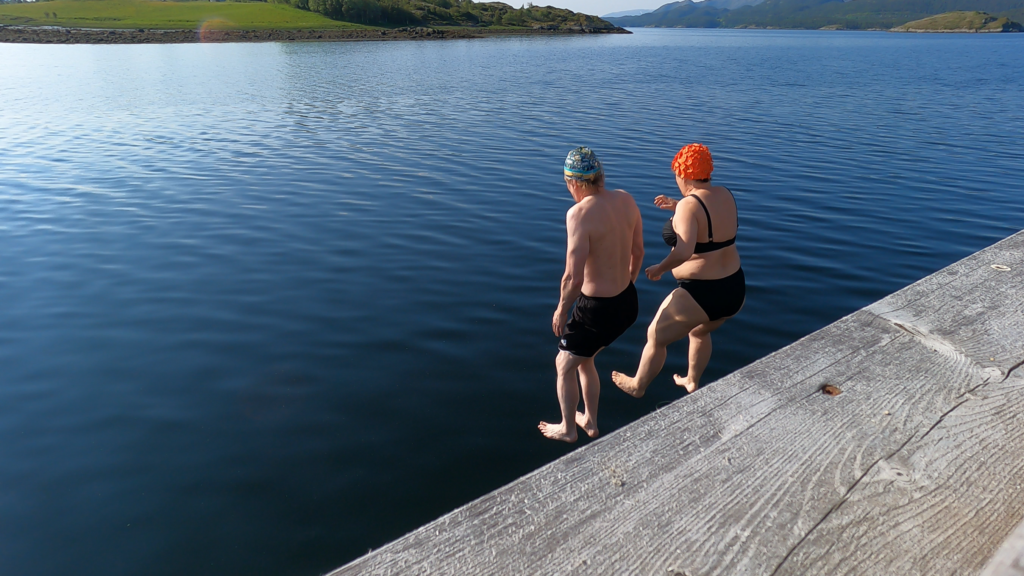Tobatheornottobathe sought out the Olav Duun Festival on the island Jøa in Namsos municipality in the north of Trøndelag. We wanted to get to know Olav Duun, his writing and the island where he grew up – and we were also pretty sure that 3 days as islanders would provide opportunities for great swimming experiences.
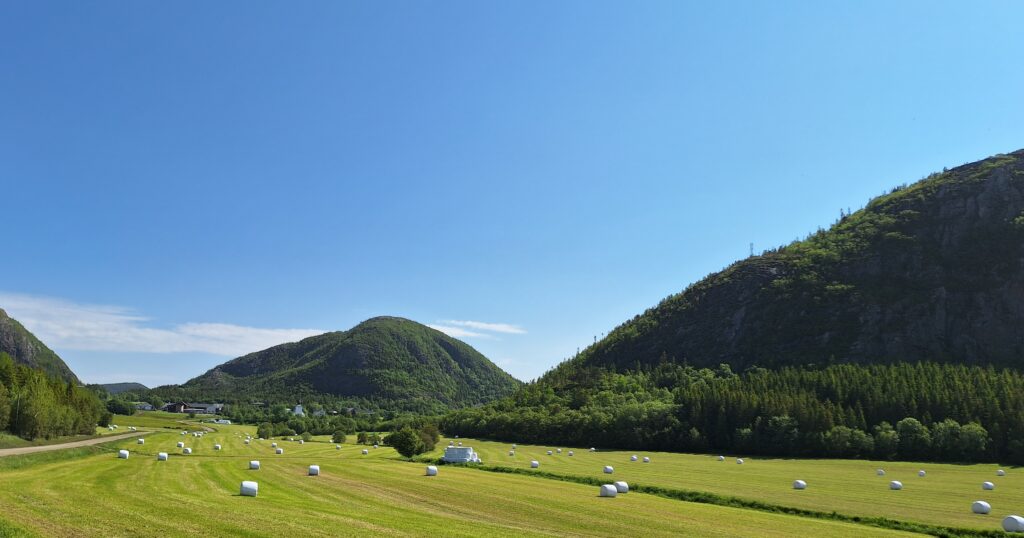
The Dun farms are located approximately in the middle of Jøa, characterized by a beautiful agricultural landscape surrounded by charming crags. On one of this there was an old fortress. In Gaelic, fortresses are called dún (such as Dún Aonghasa, which we have written about in another post). Some historians have other theories about the source of the name Dun, but we found this theory very likely, wether the Irish borrowed the name from the Vikings or vice versa. Here in Dun, Ole Julius Raabye grew up. When young, he was a fisherman for many years, before moving to Levanger in 1901 to study teaching. At that occasion Ole changed his name to Olav Duun.
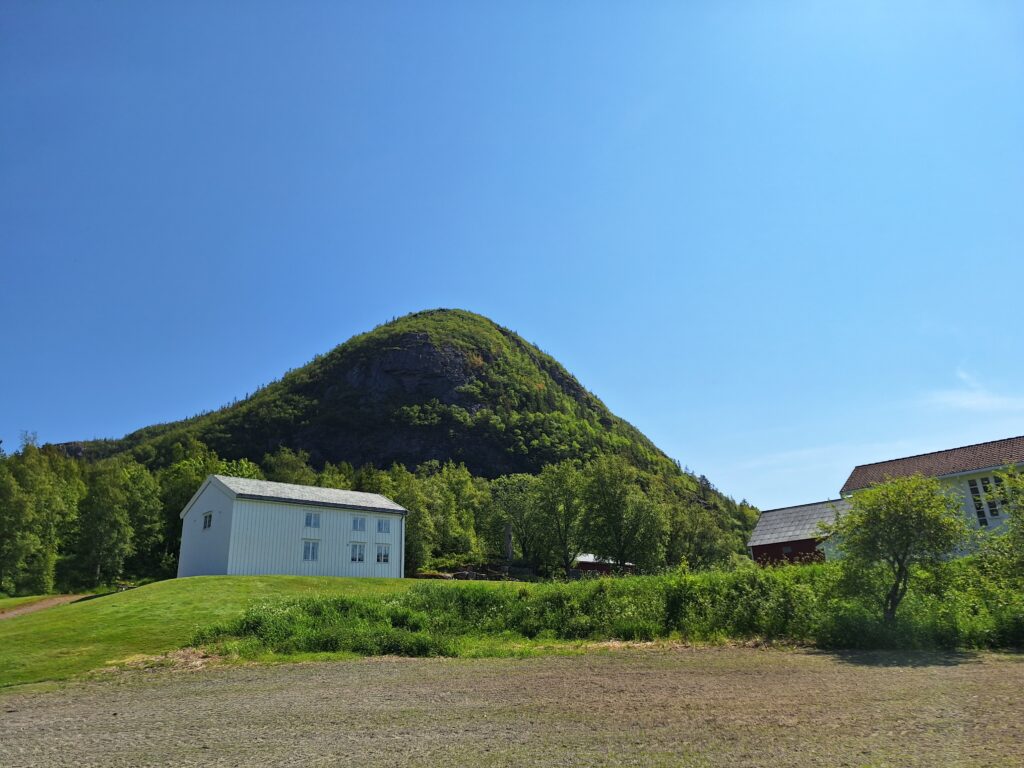
Olav Duun worked hard. In addition to his job as a teacher, he published 31 books in as many years. The sixth volume of his masterpiece ‘Juvikfolke‘ was finished in 1923, so 2023 was the 100 years celebration. He wrote with a non-standard grammar, almost writing in dialect. Which might be the reason many Norwegians from other parts of the country find him hard to read. Duun was nominated for the Nobel Prize in Literature several times, but never received it. In 1925 he lost it to Georg Bernhard Shaw by one vote. The ‘Aftenposten‘ newspaper in Oslo was so sure that Duun would win, that they published a paper on the day the award was to be announced with the headline ‘Today Olav Duun will win the Nobel Prize‘, only to withdraw the statement in the evening news. There has been “Fake News” before!
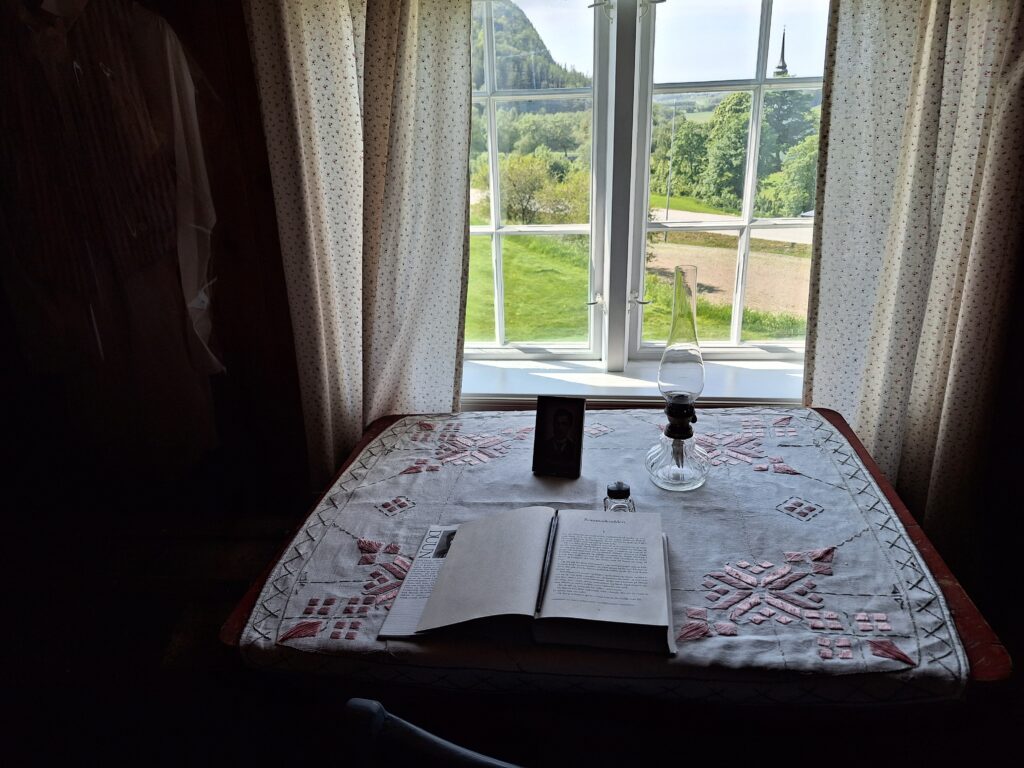
From a nice tour in the Duun house, we went quickly over to Jøa’s cultural house ‘Fyret‘ (The Lighthouse) and a presentation of ‘Juvikfolke‘ as a 3 hour monologue by Hildegunn Eggen.
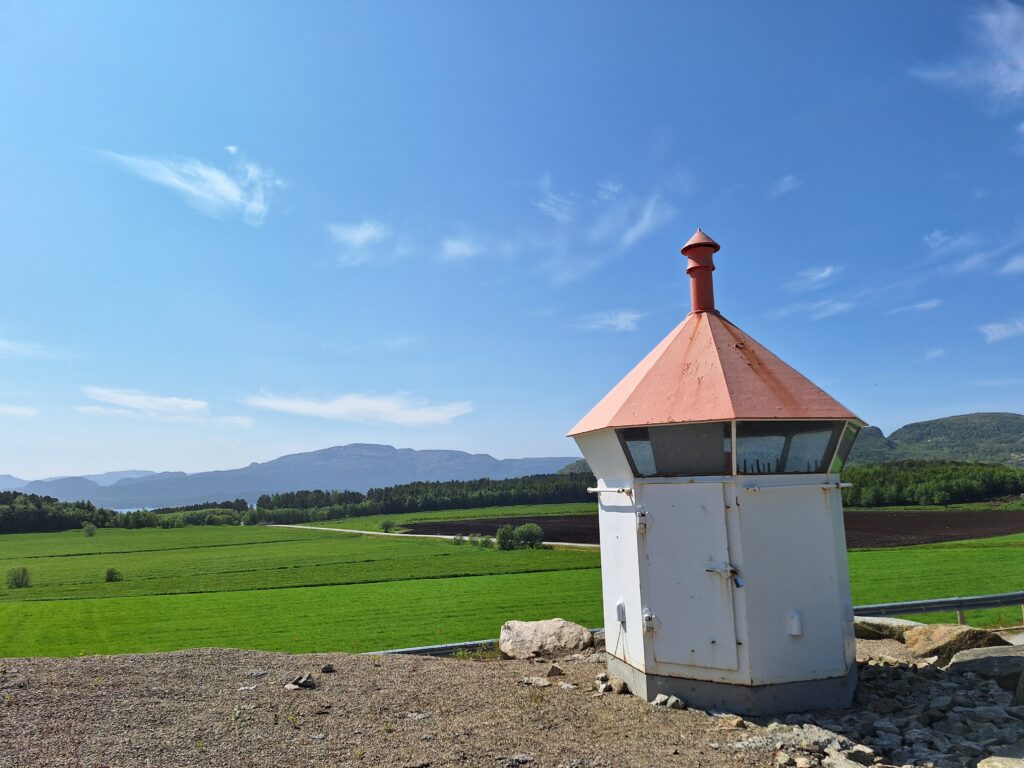
Jøa is perfect for cycling. From Fyret, it’s only a few minutes trip down to Faksdal, where the old quai provides a good atmosphere, good food and good drink.
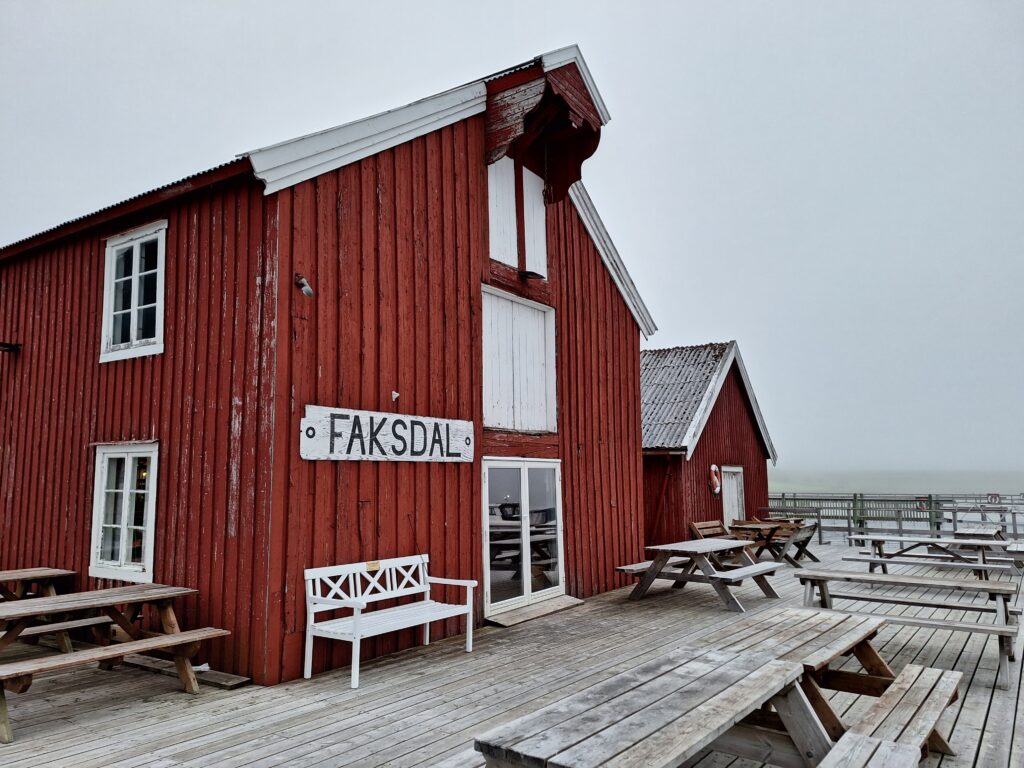
What’s more – at Faksdal Brygge it feels just right to jump off the quay!
